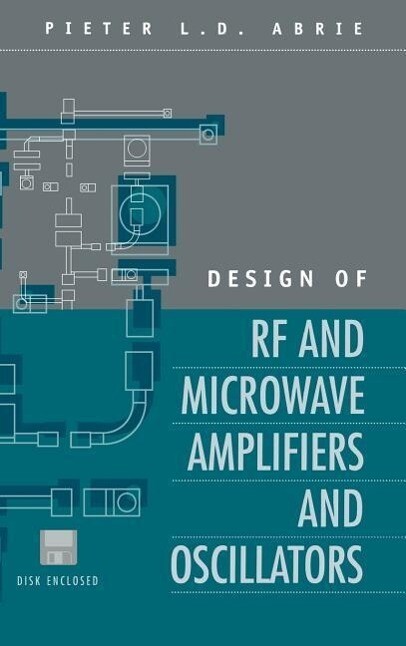
Zustellung: Do, 17.07. - Di, 22.07.
Versand in 2 Wochen
VersandkostenfreiAchieve first-time-success designing RF and microwave amplifiers and oscillators using the iterative synthesis techniques provided in this practical resource. The book introduces new approaches to help you estimate the 1dB compression point of class A and class B linear circuits, initialize the fundamental component voltages and currents in a harmonic balance simulator, and more easily generate load-pull contours for class A and class B transistors. Considered as a generalization of the Cripps approach, this independently developed method can be applied easily to control or predict the output power in single- or multi-stage amplifiers. Changes in the transistor's configuration, as well as feedback and loading can also be handled smoothly. This book helps you:
gain greater insight into the characteristics of single-layer parallel plate capacitors and provide accurate models for them
obtain a clear picture of the stability of each stage in the amplifier and control the output power and oscillation frequency of an oscillator based on linear principles
design class A high dynamic range amplifiers, multistage power amplifiers, amplifiers with an optimum noise match and a low input VSWR, and wideband impedance-matching networks The book also includes all of the design principles, theory, and background from the well-received first edition. It is an excellent resource for amplifier and oscillator designers, RF and microwave engineers, and university students.
gain greater insight into the characteristics of single-layer parallel plate capacitors and provide accurate models for them
obtain a clear picture of the stability of each stage in the amplifier and control the output power and oscillation frequency of an oscillator based on linear principles
design class A high dynamic range amplifiers, multistage power amplifiers, amplifiers with an optimum noise match and a low input VSWR, and wideband impedance-matching networks The book also includes all of the design principles, theory, and background from the well-received first edition. It is an excellent resource for amplifier and oscillator designers, RF and microwave engineers, and university students.
Inhaltsverzeichnis
Characterization and Analysis of Linear Circuits at RF and Microwave Frequencies. Characterization and Analysis of Active Circuits at RF and Microwave Frequencies. Radio-Frequency Components. Narrowband Impedance-Matching with LC Networks. Coupled Coils and Transformers. Transmission-Line Transformers. Film Resistors and Single-Layer Parallel-Plate Capacitors. The Design of Wide-Band Impedance-Matching Networks. Microwave Lumped Elements, Distributed Equivalents, and Microstrip Parasitics. The Design of Radio-Frequency and Microwave Amplifiers and Oscillators.
Produktdetails
Erscheinungsdatum
15. April 1999
Sprache
englisch
Seitenanzahl
504
Reihe
Artech House Microwave Library
Autor/Autorin
Pieter L. D. Abrie
Verlag/Hersteller
Produktart
gebunden
Gewicht
921 g
Größe (L/B/H)
236/158/39 mm
ISBN
9780890067970
Entdecken Sie mehr
Bewertungen
0 Bewertungen
Es wurden noch keine Bewertungen abgegeben. Schreiben Sie die erste Bewertung zu "Design of RF and Microwave Amplifiers and Oscillators" und helfen Sie damit anderen bei der Kaufentscheidung.







